Navigating the multitude of solutions can be daunting. However, with the proper guidance, users can find the best video-to-text software for PC or learn how to convert video to text on Mac to meet their transcription needs.
Among the options,Transkriptor is the best video-to-text software for PC in 2025. Its advanced AI technology ensures efficient and accurate video-to-text conversion. It also supports over 100 languages, making it a versatile tool for global users.
The ten best video-to-text software for PC are below:
- Transkriptor: is an advanced AI-powered transcription tool for efficient video-to-text conversion. It supports over 100 languages and integrates with major online platforms. It also offers collaborative editing features and high accuracy.
- Sonix: Automated transcription and subtitle generation in over 40 languages, improving video content accessibility.
- Amberscript Combines AI with expert review for accurate transcriptions. It features an intuitive online editor and options for rapid turnaround.
- Trint: Employs AI for fast transcription, providing an interactive platform for editing and collaboration.
- TranscribeMe: Uses AI and professional transcribers for high-quality service tailored to legal, medical, and educational fields.
- Rev: Provides transcription services by a vast network of professionals, improving video accessibility with closed captions and supporting various professional fields.
- Descript: Offers an integrated platform for recording, transcribing, and editing videos. It features AI-driven tools like voice cloning and background noise removal for seamless content creation.
- Happy Scribe supports numerous languages for transcription and subtitle creation, offers features for collaborative editing, and offers various export options.
- GoTranscript: This program specializes in 100% human-made transcriptions, focusing on accuracy and professional assistance and tailored to meet specific user requirements.
- Otter.ai: Increases meeting productivity with automatic transcription and summaries. It integrates with significant meeting platforms for real-time notes and summaries.
1. Transkriptor
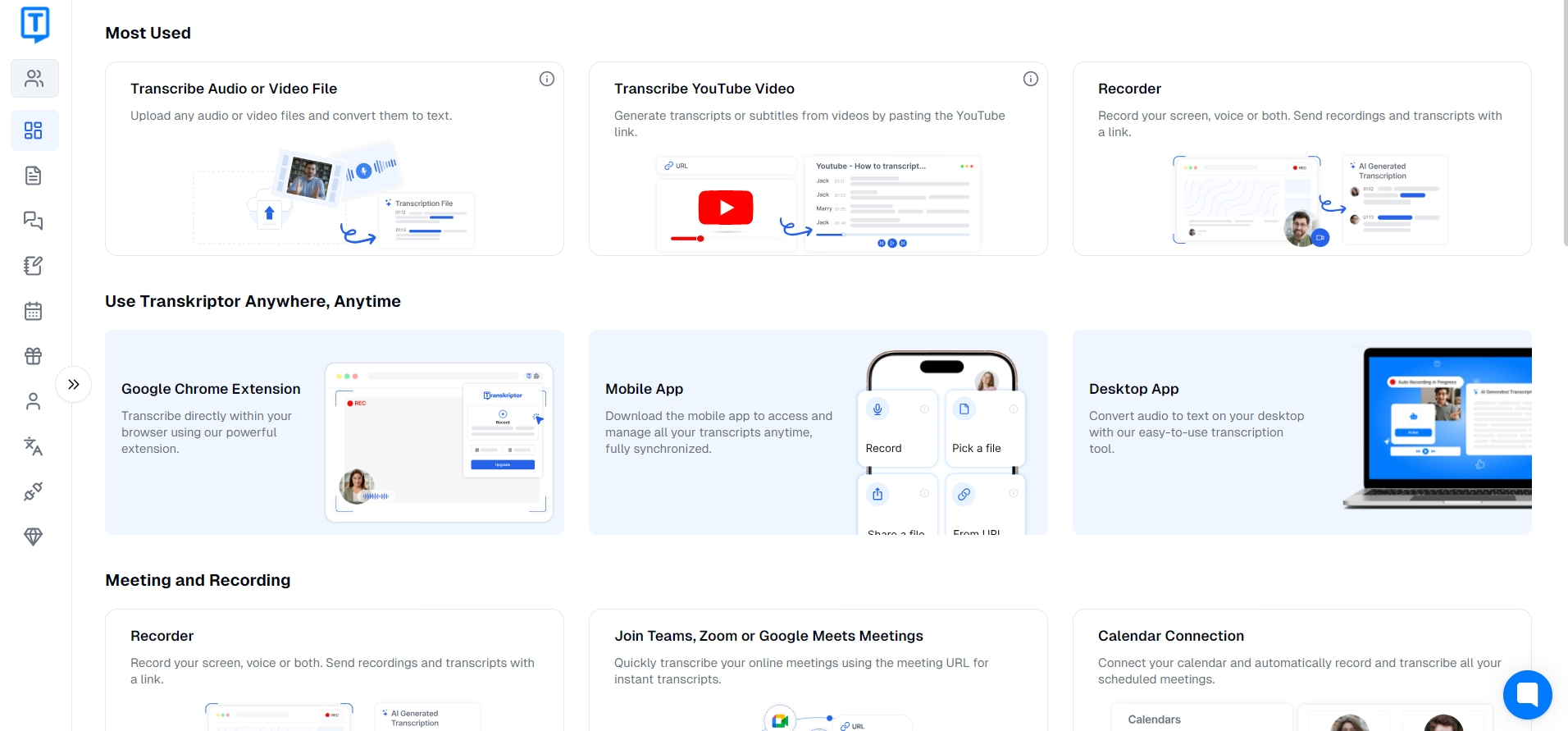
AI platform Transkriptor transforms the video-to-text conversion process with its advanced AI (artificial intelligence) technology. It automatically captures and converts speech from videos, meetings, and conversations into text.
Transkriptor breaks down language barriers with the capacity to transcribe content in over 100 languages. This feature makes it an invaluable tool for users needing to interpret or create content in multiple languages. It also supports all popular audio and video file formats and collaboration features, including translation on Zoom .
The speech recognition software is available on various devices through a mobile app and as a Google Chrome extension. It integrates with online platforms like Zoom , Microsoft Teams, and Google Meet. Users can also use Transkriptor’s meeting recorder , which combines with the calendar to attend and record meetings.
Transkriptor improves collaboration by enabling teams to work on transcribed documents and record video messages . It features sophisticated tools such as slow-motion editing and multiple speaker recognition, facilitating a more detailed and accurate transcription process.
Transkriptor stands out for its speed, precision, and pricing. It delivers transcripts with up to 99% accuracy in half the time of the original audio. It offers an accessible solution for anyone needing efficient video-to-text transcription services. Try it for free with the free trial option!
2. Sonix
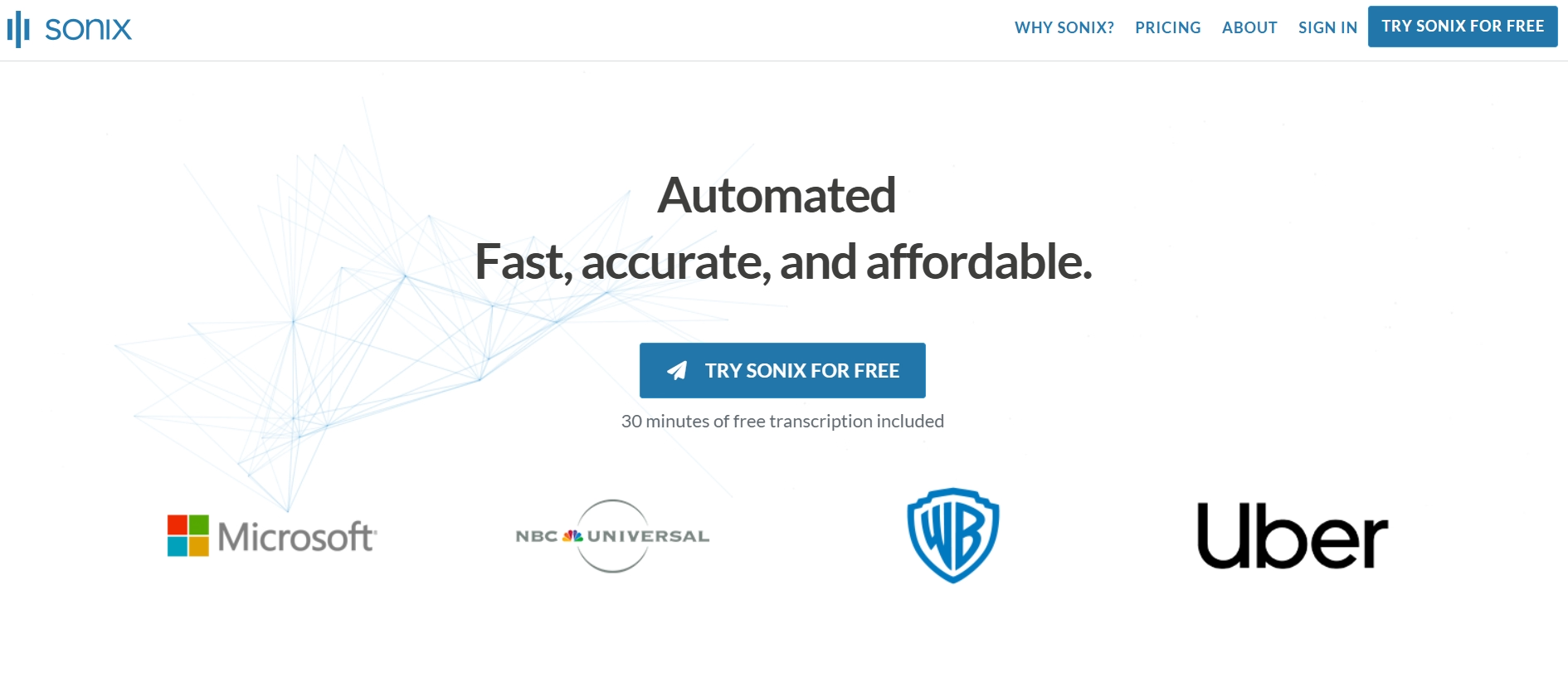
Sonix improves video-to-text transcription with its automated capabilities, ensuring users experience efficient and accurate conversion of video content into text. It supports transcription in 40+ languages, including meetings, lectures, interviews, and films.
Sonix offers an AI subtitle generator in addition to its core transcription services. This feature allows for fine-tuning to ensure that subtitles perfectly match the content's engagement requirements.
3. Amberscript
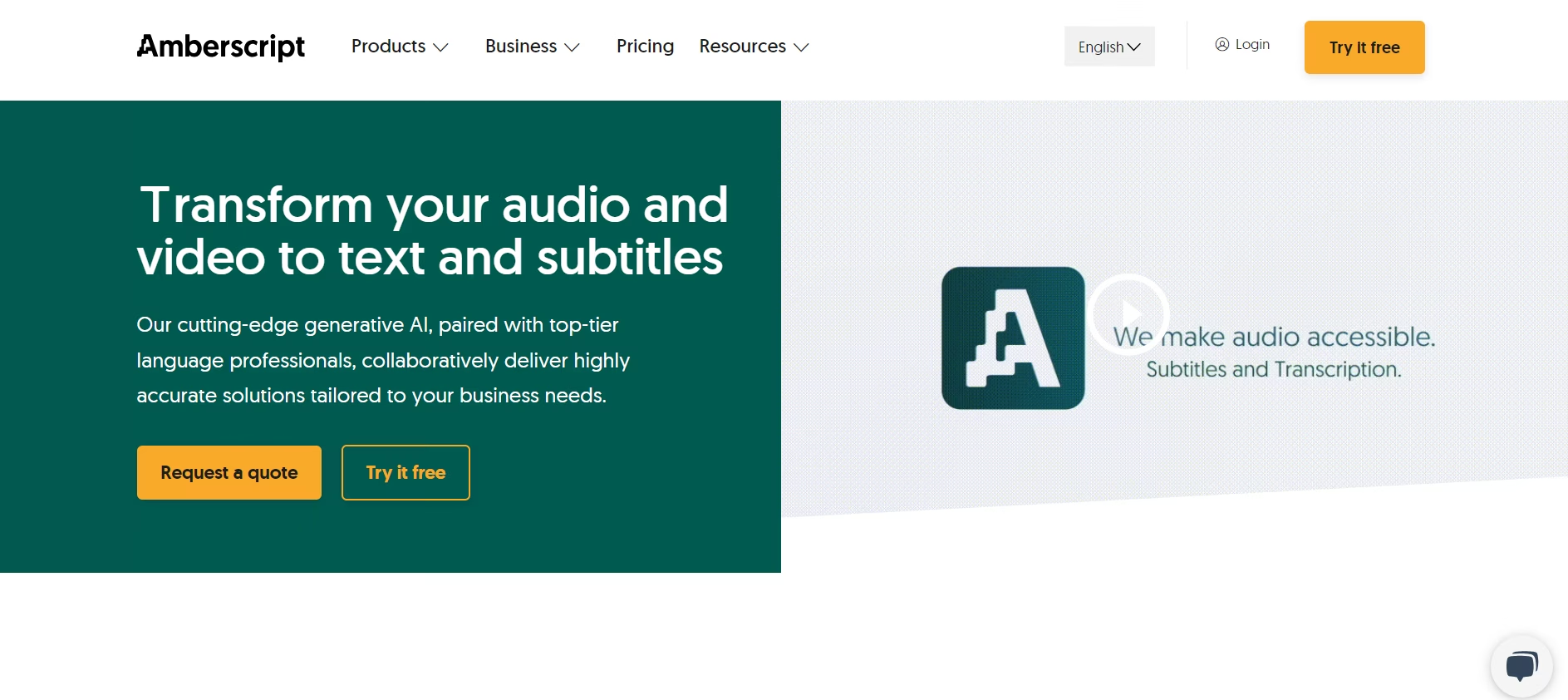
Amberscript’s video-to-text transcription combines AI technology and professional expertise. It offers swift and precise transcription services for video content.
This platform lets users quickly transform video files into accurate text documents, catering to small and large-scale projects. The platform's intuitive online editor enhances transcription accuracy by allowing users to edit their transcripts.
The transcription process is straightforward. Users upload their video files, select the preferred type of transcription service, and easily export or share their transcripts.
4. Trint
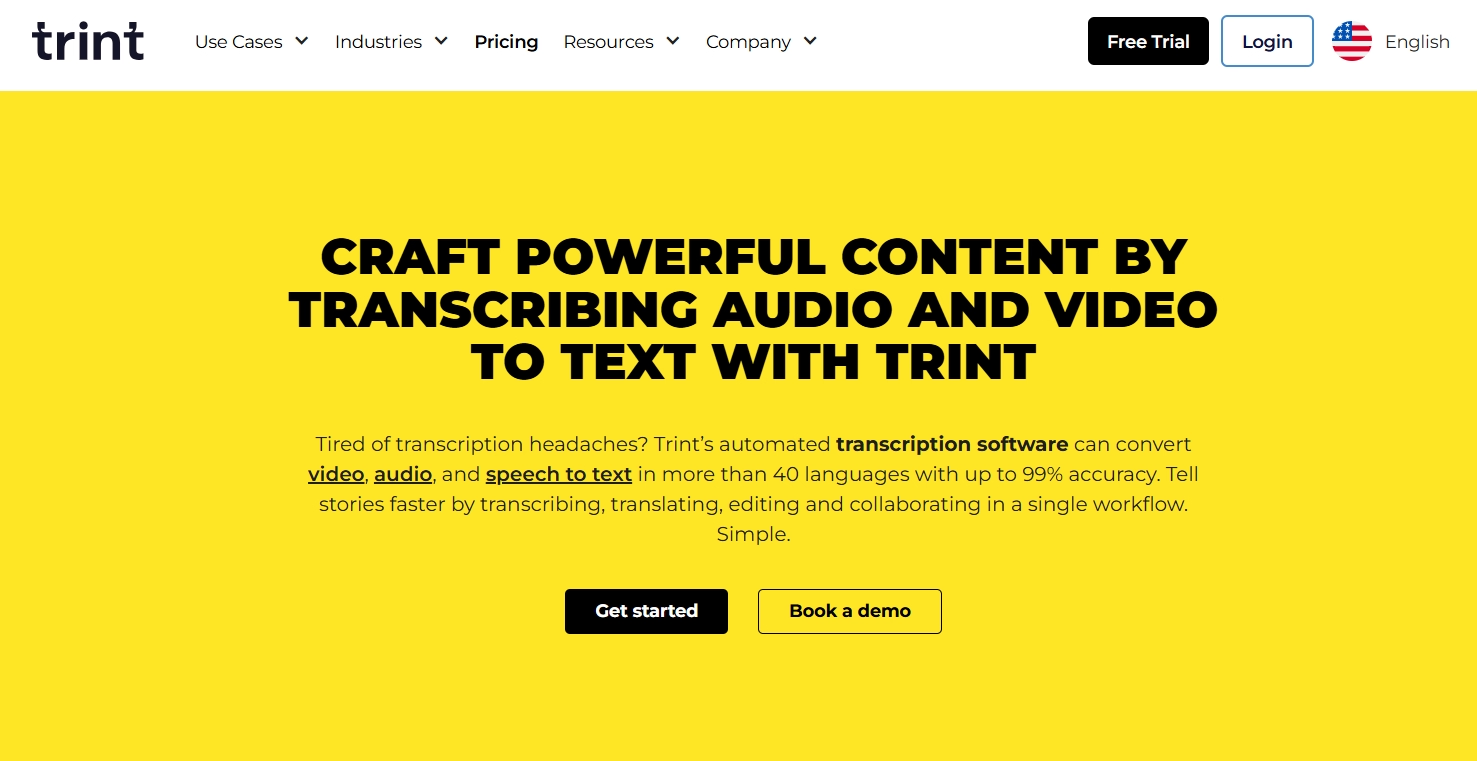
Trint transforms how users convert video content into text, employing advanced AI to transcribe audio and video files. The platform's user-friendly interface allows easy verification, editing, and playback. This feature particularly benefits professionals creating articles, podcasts, scripts, and soundbites, streamlining their workflow and enhancing productivity.
5. TranscribeMe
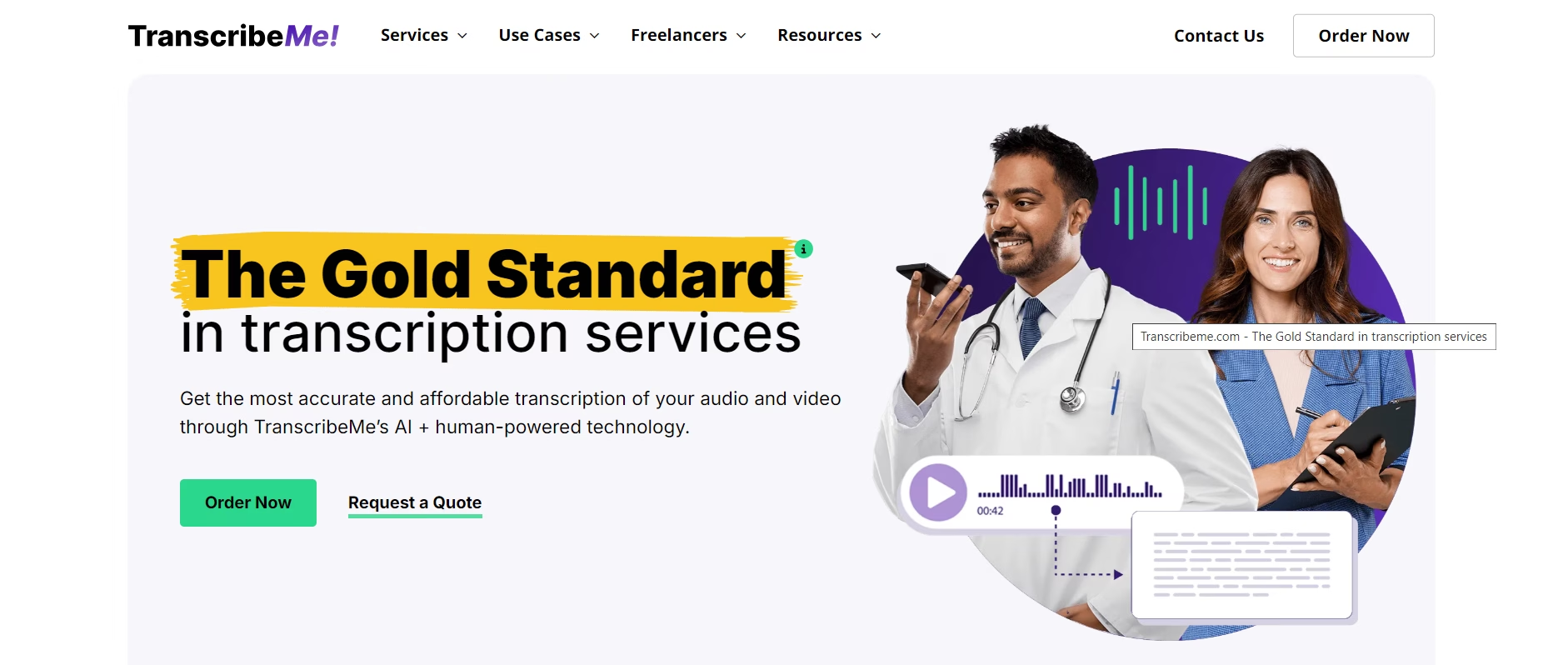
TranscribeMe leverages AI technology and a network of transcribers to provide top-tier video-to-text transcription services. The platform extends its services to include precise, custom translations with multi-language support.
TranscribeMe's video-to-text transcription services also meet the specific demands of legal, medical, educational, market research, and enterprise fields. This bespoke approach allows for the delivery of formatted and proofed transcripts suitable for legal proceedings and medical data handling in compliance with HIPAA.
6. Rev
Rev transforms video content into accessible text through its precision-driven transcription services. This platform enhances video accessibility and viewer engagement by offering closed English captions.
Rev is a reliable partner for various media, education, and legal professionals. Users recognize it for its efficiency and high-quality service output. Rev enables broader accessibility with captions and fosters global connection through subtitles .
7. Descript
Descript equips users with an integrated writing, recording, transcribing, and editing platform. This tool simplifies video production by allowing users to edit videos as easily as text documents.
Descript's AI-driven voice cloning and text-to-speech generation offer realistic voice reproductions and efficient content creation. The tool's background noise removal and audio polishing features ensure the final product has studio-quality sound.
8. Happyscribe
Happyscribe lets users quickly transform video content and audio recordings into accurate text transcripts and engaging subtitles. It supports various languages, such as English, French, and Spanish. Happy Scribe offers an intuitive environment for editing and refining transcripts and subtitles through its sophisticated interactive editors, ensuring precision and ease of use.
Happy Scribe's commitment to flexibility is evident in its unlimited upload capacity, enabling users to handle extensive projects without constraints. Additionally, its machine translation feature and efficient integrations, including Zapier and YouTube , enhance productivity and workflow integration.
9. GoTranscript
GoTranscript specializes in converting video content to text with 100% human-made transcription services . The platform ensures over 99% accuracy for video transcriptions, supported by a vast network of over 45,000 professional transcribers.
10. Otter.ai
Otter.ai boosts meeting productivity through automatic transcription and summaries. Integrating Otter.ai with platforms like Microsoft Teams allows OtterPilot to offer real-time notes during meetings. Otter.ai's innovative technology condenses lengthy meetings into concise 30-second summaries, promoting effective team communication and understanding.
This tool supports education and media industries by offering features like Sales Insights extraction and live lecture transcriptions.
How Does Video-to-Text Software Work?
The best video-to-text software for PC uses different types of speech recognition technology. It analyzes the audio component of a video and converts spoken words into written text.
Users can transcribe video to text by uploading their videos to the software. Then, it processes the audio track, accurately identifying and transcribing the spoken content. This process typically involves sophisticated algorithms recognizing different accents, languages, and speech patterns.
Users can edit the text as needed, correcting errors or inaccuracies once the transcription is complete. Additionally, the software often provides features for formatting and exporting the transcript in various formats, such as plain text, Microsoft Word , or SRT files. This versatility allows users to integrate the transcribed text seamlessly into their projects or workflows.
What Features Define the Best Video-to-Text Software?
Users rely on several key features to determine the best video-to-text software for PC. Accuracy is paramount, as users expect precise transcriptions that faithfully capture spoken content. Speed is also essential, allowing users to generate transcripts quickly and without delay.
Support for multiple languages and accents is crucial for users of diverse content, and the best text to speech software makes navigation effortless.
Integration capabilities with other platforms allow users to incorporate transcribed text into their existing workflows seamlessly. Robust editing features are essential for refining transcripts. These features enable users to correct errors, format text, and customize transcripts to meet their needs.
Additionally, features such as automated summaries, and speaker identification; contribute to the overall effectiveness of video-to-text software.
Ultimately, the best video-to-text software for PC combines accuracy, speed, language support, ease of use, integration, and editing features. For instance, if you have a Mac, explore how to convert video to text on a Mac . If not, video-voice-to-text is another option.






